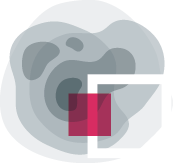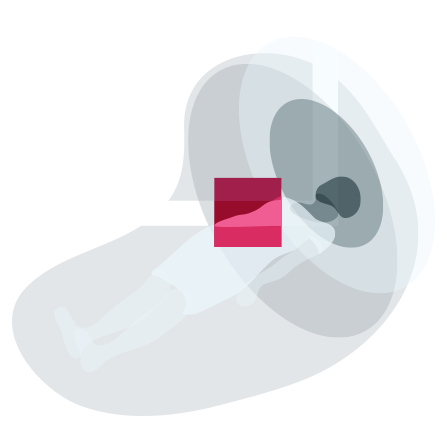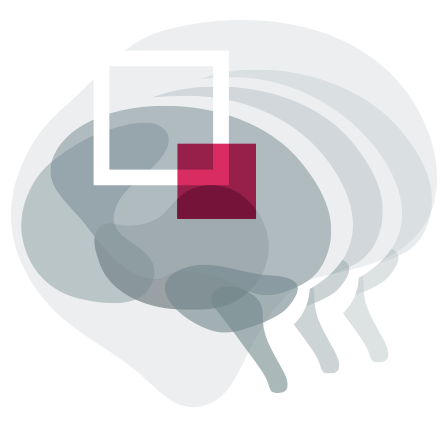Radiomics in medical imaging analysis
Radiomics is a method that extracts numerous quantitative features from medical images that are unrecognizable to the naked eye. This approach enables the creation of new imaging biomarkers and access to additional information at a microstructural level.
Medical imaging primarily relies on semantic image analysis. Radiomics, a complementary approach, extracts quantitative features from medical images using advanced image processing techniques. By combining these features into statistical or machine learning models, radiomics offers the potential to predict clinical outcomes and personalize treatment strategies.
Custom radiomics project development

Image data acquisition and reconstruction
It is important to homogenize data during the acquisition or pre-processing step. Data preparation should be not only pixel or voxel oriented, but we also need to check that the data is unbiased to avoid modelling problems.

Medical image segmentation
We develop automated segmentation algorithms. We fully understand that this step is the most critical in radionics. The following feature data and quantification are generated from the segmented ROI (region of interest).

Features extraction & selection
In every project, we follow the criteria of the Image Biomarker Standards Initiative. By working closely with clinicians, we can also create handcrafted features. Selected biomarkers are analyzed by tailored algorithms.

Data analysis & interpretation
In this step, we build a model. Modelling allows us to respond to the asked questions – for example to determine which patients are likely to benefit from therapy or to predict the risk of developing recurrence of a disease.
Gain the advantage using radiomics
New imaging biomarkers
Radiomics provides new imaging biomarkers for very precise and detailed exploration of pathologies. Additionally, it minimizes interobserver variability by leveraging AI-enabled segmentation and analysis.
Early indicators for treatment
Data derived from images combined with texture analysis fuels diagnosis, therapy, and prognosis. Hence, radiomics provides early indicators of treatment effectiveness, which makes it a great aid in patient response assessment and clinical trials.
Exposing data and patterns
This method expounds medical images to numbers which helps clinicians to see the lesions in multiple dimensions and compound them with structural and textural characteristics. Furthermore, it enables more accurate treatment planning by exposing data and patterns within a lesion that were hidden beforehand as well.
Better patient selection
By leveraging Radiomics you can better select and stratify patients at the very early stage in drug development trajectory. Moreover, the combination of imaging and phenotypic data may reveal the key to facilitating better clinical decision-making and treatment.
Why develop a project with Graylight Imaging?
At Graylight Imaging, we have experience in the extraction, selection, and grouping of radiomic features and data analysis in radiomic projects. Thanks to prepared functions, we create a model answering the question asked.
Our engineers provide specialized algorithms for data characterization that analyse medical images using particular biomarkers. With the help of the algorithms we’ve created, we can extract a plethora of characteristics from medical data.
We’ve been engaged in the creation of automated and accurate machine learning algorithms for our clients for years. Our team is capable of developing a tailored segmentation model that aligns with your specific needs and serves as an important element of radiomic project.
We believe radiomics can enhance patient care and reduce costs. Moreover, the noninvasive nature of radiomics aligns with the growing emphasis on patient-centred care, minimizing the burden on patients and healthcare providers.




